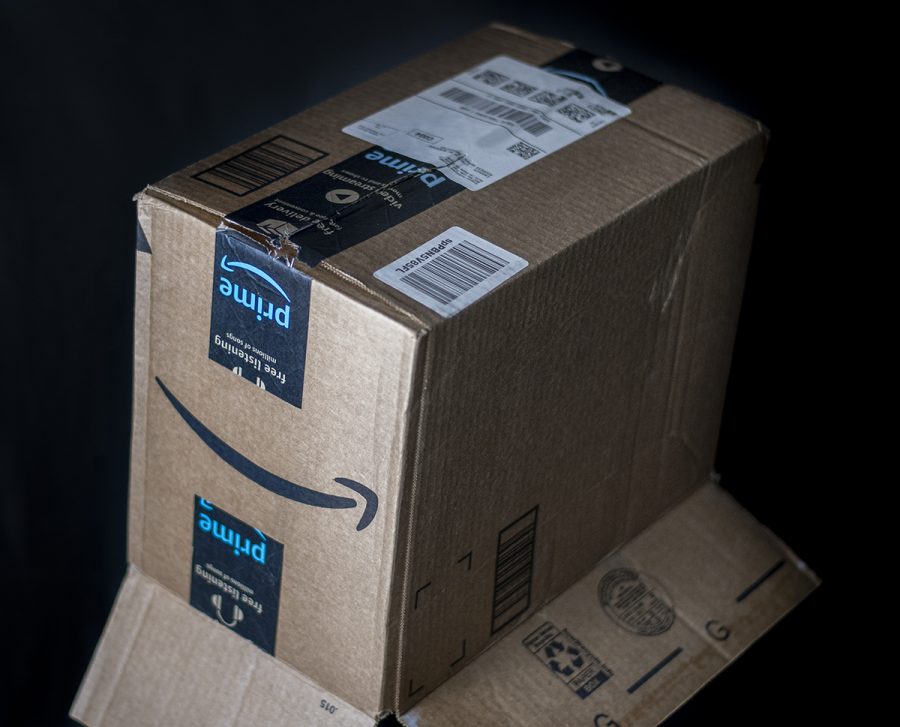In the first six months of 2020, online shoppers spent $347.26 billion with U.S. retailers. This was up 30.1% compared to the same period in 2019, according to the latest Digital Commerce 360 analysis of the U.S. Department of Commerce’s data.
The same article stated, “The spike in ecommerce sales largely came from consumer spending habits in the second quarter, which was plagued by the height of the coronavirus pandemic that caused widespread store closures and stay-at-home orders.”
These “consumer spending habits” include people shopping more frequently than usual. Sophomore Annie DeTar, for example, rarely went shopping before the COVID-19 pandemic, but now is a frequent online customer of stores such as Patagonia and Levi’s.
“Online shopping during quarantine really just gives me something new to do and something to look forward to,” DeTar said. “I get bored really easily, and it’s exciting when your package arrives.”
Online shopping can counter different moods, whether it be boredom, sadness, stress or anxiety. A study from the Journal of Consumer Psychology found retail therapy not only makes people happier immediately, but can also fight lingering sadness or stress. Shopping can be a coping mechanism for people who are sad or scared, as they often feel they have no control over their lives. Making the choice whether to buy something gives them the control they lack. In a time where COVID-19 is taking over the world, the statistics show more people are turning to shopping and exercising their autonomy.
Dr. Li Zhao is an assistant professor in Textile and Apparel Management at the University of Missouri—Columbia whose research focuses on textile and apparel management, informatics and data science and business studies.
“Sometimes consumers, they have the need to go outside and then they have the need, sometimes not just for actual purchasing, but they just want to explore what is available out there,” Dr. Zhao said. “Of course, you know you don’t have lots of opportunities to go outside. Traditionally, you just go to a shopping mall and then you can just try on those products, but right now, the most convenient, the safe way is to purchase those products online.”
A 2011 study published in the Journal of Psychology and Marketing showed people who are upset tend to be more impulsive, which could mean they spend more money while upset than usual. Dr. Elina Tang, assistant professor at the College of Business at Northern Illinois University, said in moments of stress, consumers may seek out different tasks to help cope.
“There’s some research showing that when people are stressed, especially during the pandemic, they tend to use their smartphone more often,” Dr. Tang said. “People [shop] on Amazon more often, because they want to do something, rather than stay home and do nothing. That’s one way for them to cope.”
Consumer behavior has changed in other ways since the COVID-19 pandemic as well. Dr. Tang said the pandemic poses as an environmental “threat” to people, meaning it causes stress and disruption in aspects of life such as spending habits. She said a person’s identity as a consumer can start to shift in face of COVID-19’s threat.
“Many marketing researchers think that a threat causes disruption in various areas — in work, in spending, in saving, in social life, even in self identity,” Dr. Tang said. “Consumers naturally try to protect themselves by having some kind of adaptive response. Some people might start to save more money, some people start spending more money, or stockpile things they think are essential. Some people might be more materialistic before the epidemic and become less materialistic after the pandemic, because they realize what’s more important to them.”
Dr. Zhao said shopping frequently contributes to waste in the fashion industry, something that could be reduced if companies encouraged consumers to buy classic styles and keep clothing items for a longer time. She said consumers don’t necessarily need to buy excess amounts of clothing right now since they are going to fewer places.
“Waste, overconsumption, especially because of fast fashion … that creates a kind of culture that you need to buy lots of new things,” Dr. Zhao said. “Because usually they [aren’t] very good quality, you can only wear them for probably just one season, or one year and then you discard those products. The overconsumption and the waste, that’s a huge problem in the fashion industry that’s relevant to consumers.”
A 2019 Pulse of the Fashion Industry report stated fashion generates 92 million tons of waste each year. Big companies are responsible for a large part of this problem, such as luxury fashion house Burberry which has incinerated unsold stock to preserve product scarcity and brand exclusivity in the past.
To combat environmental problems in the fashion industry, Dr. Zhao said brands need to hold themselves and their suppliers accountable. Large retailers, she said, can publish sustainability reports every year highlighting how they work with their suppliers: if manufacturers in developing countries are providing a fair wage to their workers, what kind of support they are giving to their workers and employees and their plans to reduce energy and water waste across the entire supply chain. Because of the COVID-19 pandemic, the supply chain of the fashion industry has been disrupted—apparel workers in countries such as Bangladesh or Vietnam have lost their jobs after buyers have canceled their orders, Dr. Zhao said.
“[The fashion] industry is really a buyer-driven industry,” Dr. Zhao said. “[Retailers] have more power, so if they can require their suppliers to meet certain criteria and then they pay the right price, I think that’s the most important thing that we can do to make sure that the whole supply chain can achieve sustainability.”
Have you been shopping online more since the COVID-19 pandemic? Let us know in the comments below.













































































